Endlessly versatile, fragrant, herbaceous and earthy, fresh thyme is prized for the depth and complexity it can add to a wide variety of dishes. This guide will provide all the information you need to prep, store and cook fresh thyme.
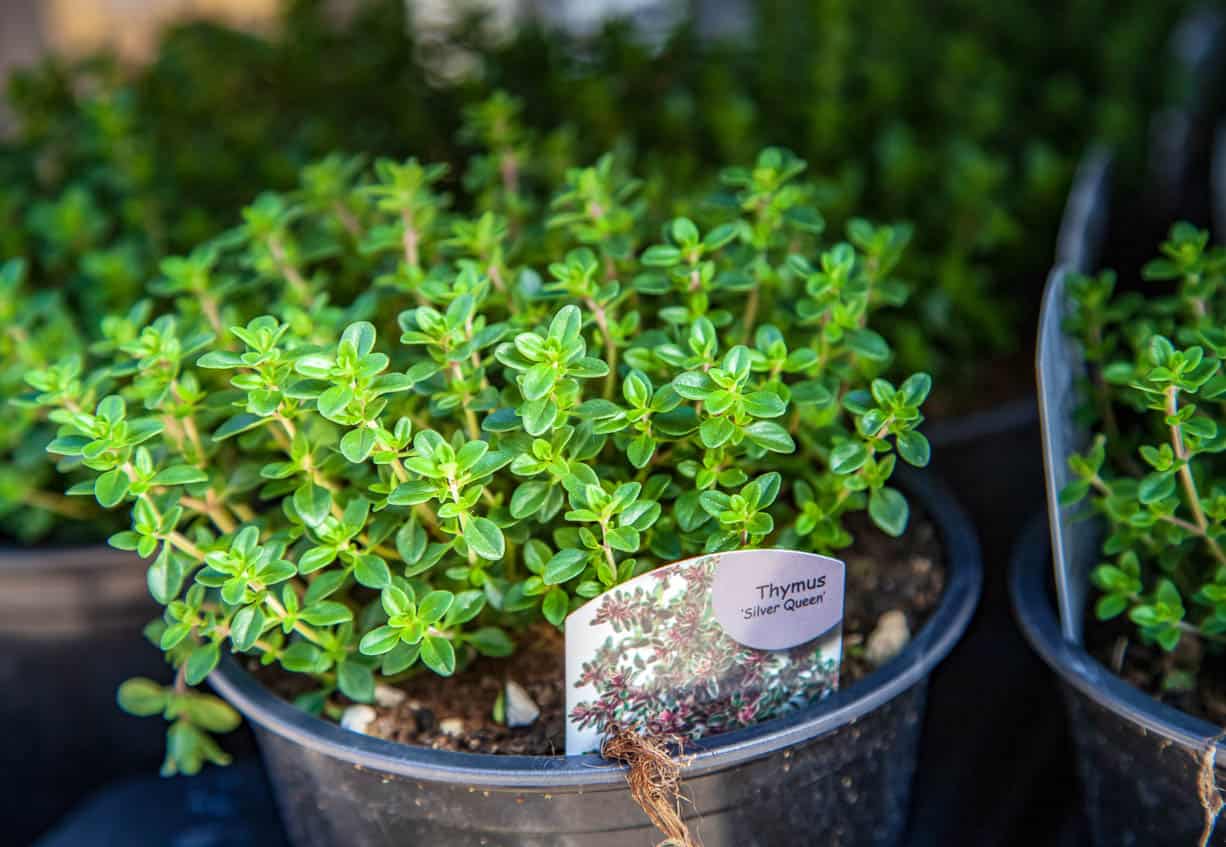
Picking fresh thyme
As an evergreen herb, thyme is harvested all year long. New leaves are most flavorful and grow in the late spring and summer.
Fresh thyme is a hardy green herb with tiny, narrow leaves growing from a woody stalk. Only the leaves are edible; however, you can add the full stalk to dishes while they cook and remove the stem before serving.
If you don’t have the time or space to grow herbs at home, you can buy bunches of thyme at the grocery store or farmer’s market.
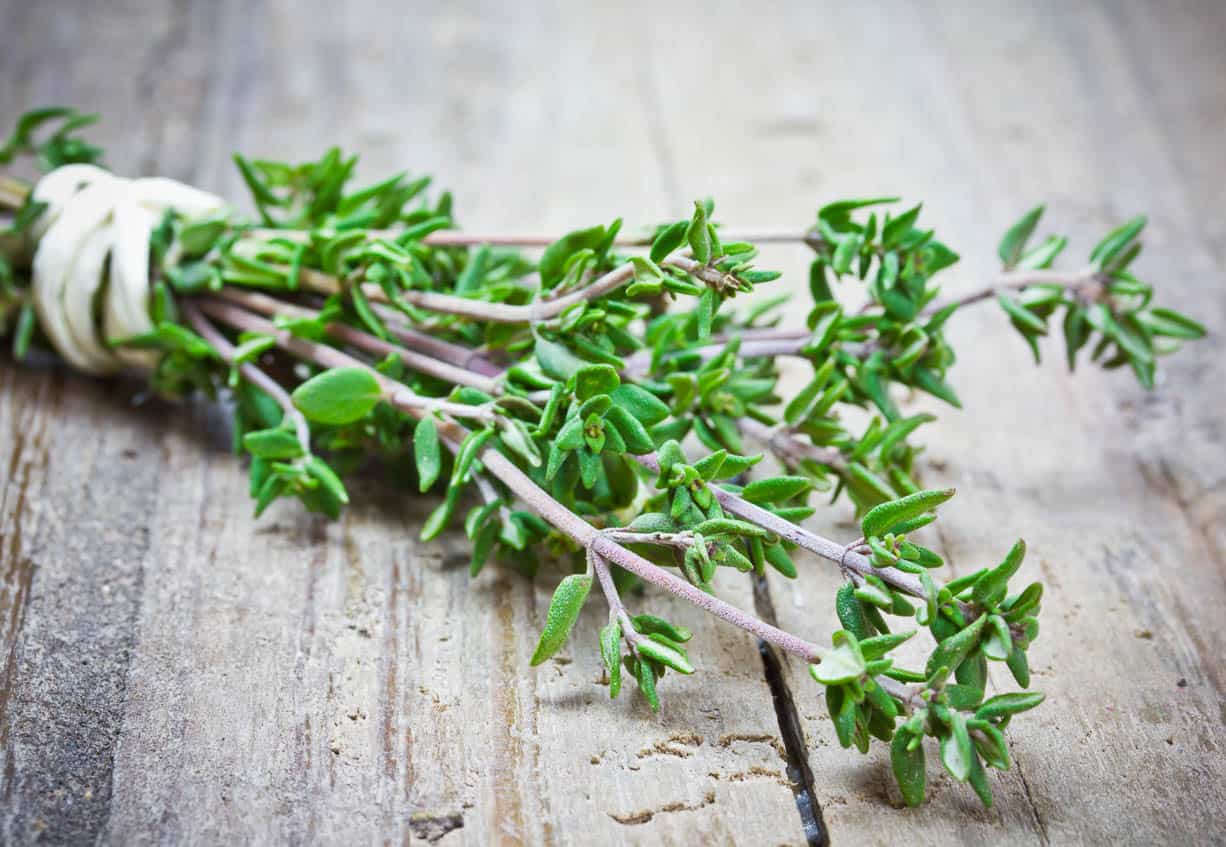
To select the best thyme, choose bunches with vibrant green leaves that are not wilted, yellow or brown. They should have a strong, pleasant aroma when pinched between your fingers. The stems should be flexible instead of overly dry or brittle.
Avoid bunches with fully bloomed flowering stems, and look for packages without excess moisture or condensation inside, as this can lead to mold. Be sure only to select a bunch as large as you need. Thyme tends to be sold in larger quantities and can spoil if not used within a given time frame.
The taste of thyme
Thyme has an earthy, somewhat floral taste with notes of lemon and mint. It provides a subtle freshness, warmth, depth and complexity to dishes.
How to properly clean thyme
To clean your thyme, first, inspect the bunch for any debris, like small sticks. Rinse the leaves under cool running water. Use your hands to gently agitate the leaves to facilitate the removal of dirt.
You can remove excess moisture by patting the thyme dry with paper towels, or you can let it air dry on the counter.
Storage suggestions
Thyme is a hardy herb but still requires proper storage to ensure it will last as long as possible. There are several ways to store thyme to preserve its flavor and texture.
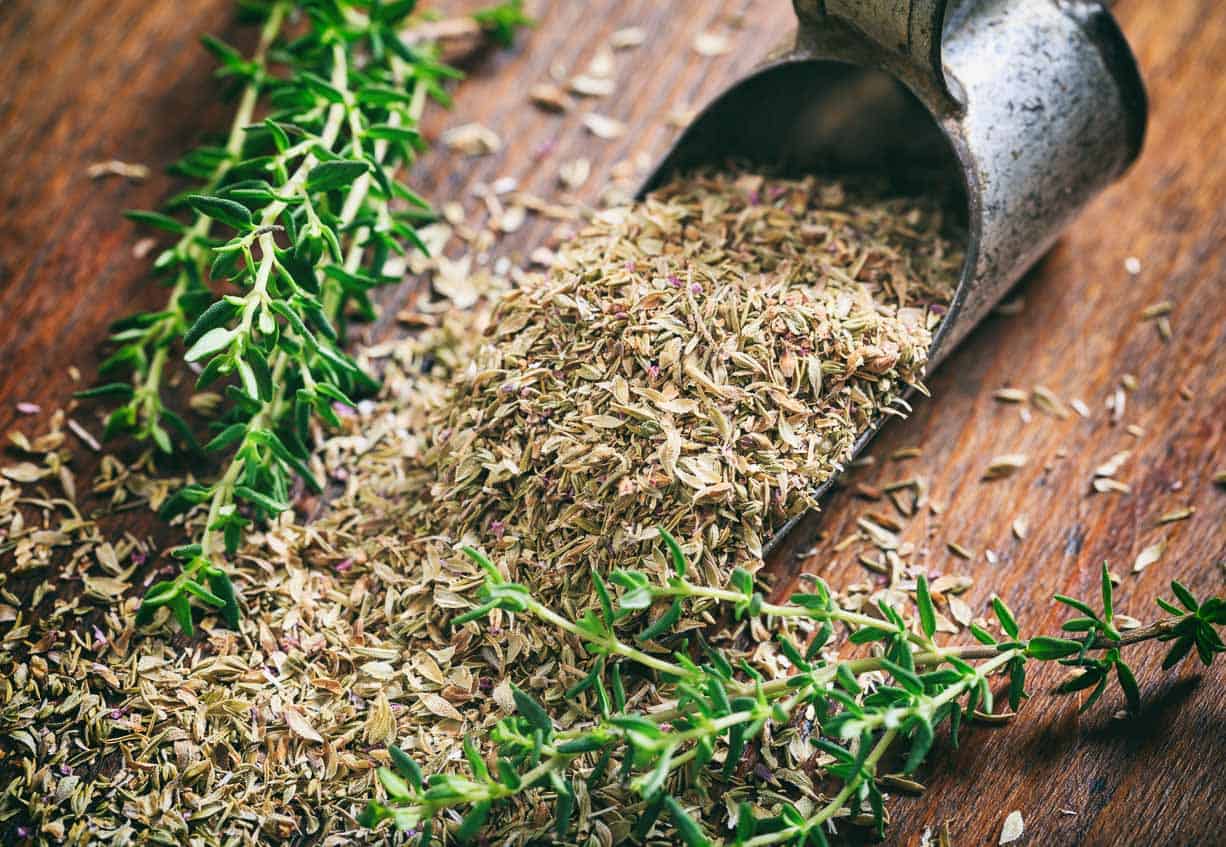
The first option is to store it in a damp paper towel. Place a pile of the herbs in a damp paper towel, roll loosely and then store in a plastic bag in the refrigerator. It should last for one to two weeks.
“When I have leftover thyme, I store it in an airtight container or sealed plastic bag with a wet paper towel. I will use it up in dinner recipes or make a thyme simple syrup for cocktails.”
— Susannah Brinkley Henry, Feast + West
The second option is to store thyme in a jar of fresh water. Place just the base of the thyme stems in cool water in a small glass jar in the refrigerator. Add more water as needed to keep the stems submerged, and change the water every day or so.
The third option is to dry your fresh thyme. You can dehydrate it by placing it on a sheet tray in your oven at the lowest possible temperature or using a food dehydrator. You can also tie a loop around the base of your bunch of thyme and hang it upside down in a cool, dry place until fully dried, which will take anywhere from a few days to two weeks.
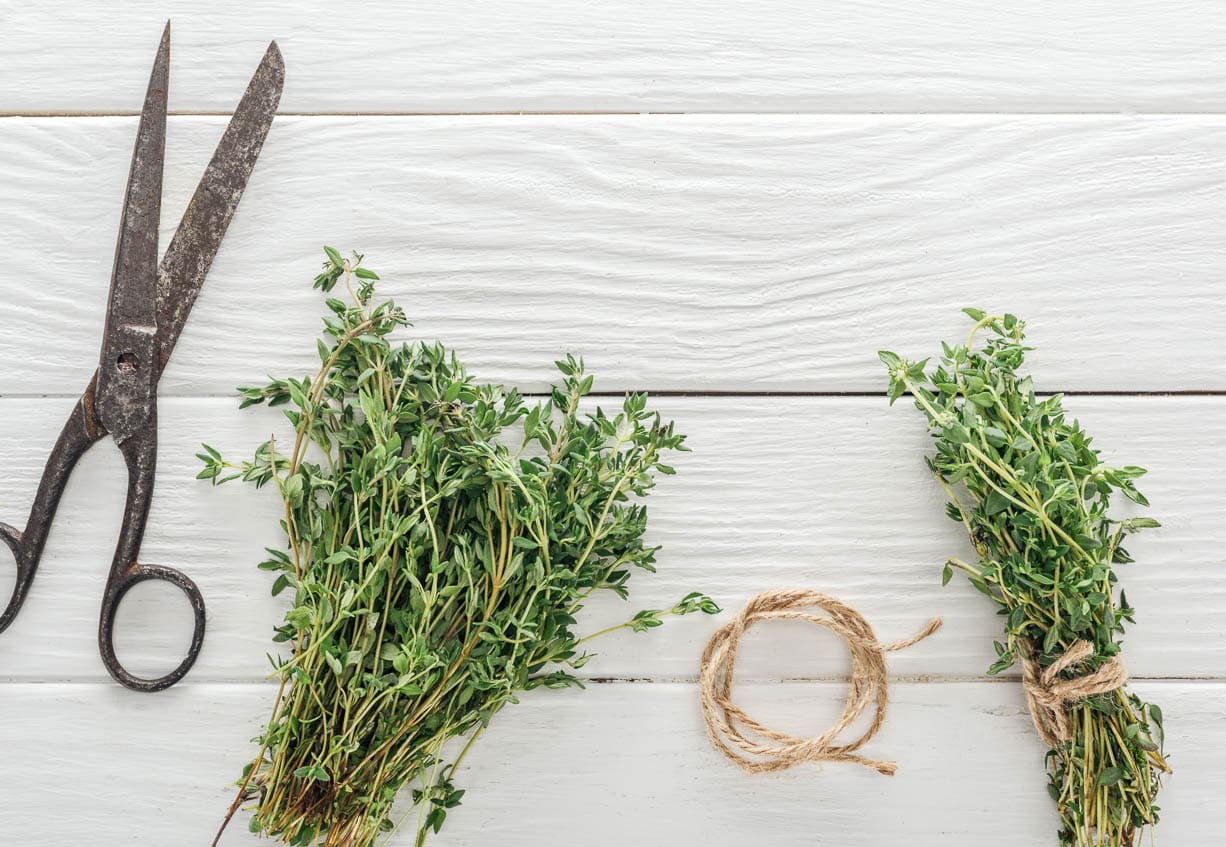
Once your thyme is fully dried, store it in an airtight container like a jar or glass container with a locking lid.
Frozen thyme will not be as fragrant or flavorful as fresh thyme, but it will still add some wonderful flavor to your favorite dishes.
To freeze fresh thyme, remove the leaves from the stem. Then add it to ice cube trays, cover it with water and freeze. You can add thyme ice cubes to soups, stews and sauces.
Culinary uses for fresh thyme
While delicate herbs like basil and parsley are best added to dishes at the end of their cook time, hardy herbs like thyme can withstand higher temperatures and longer cooking times.
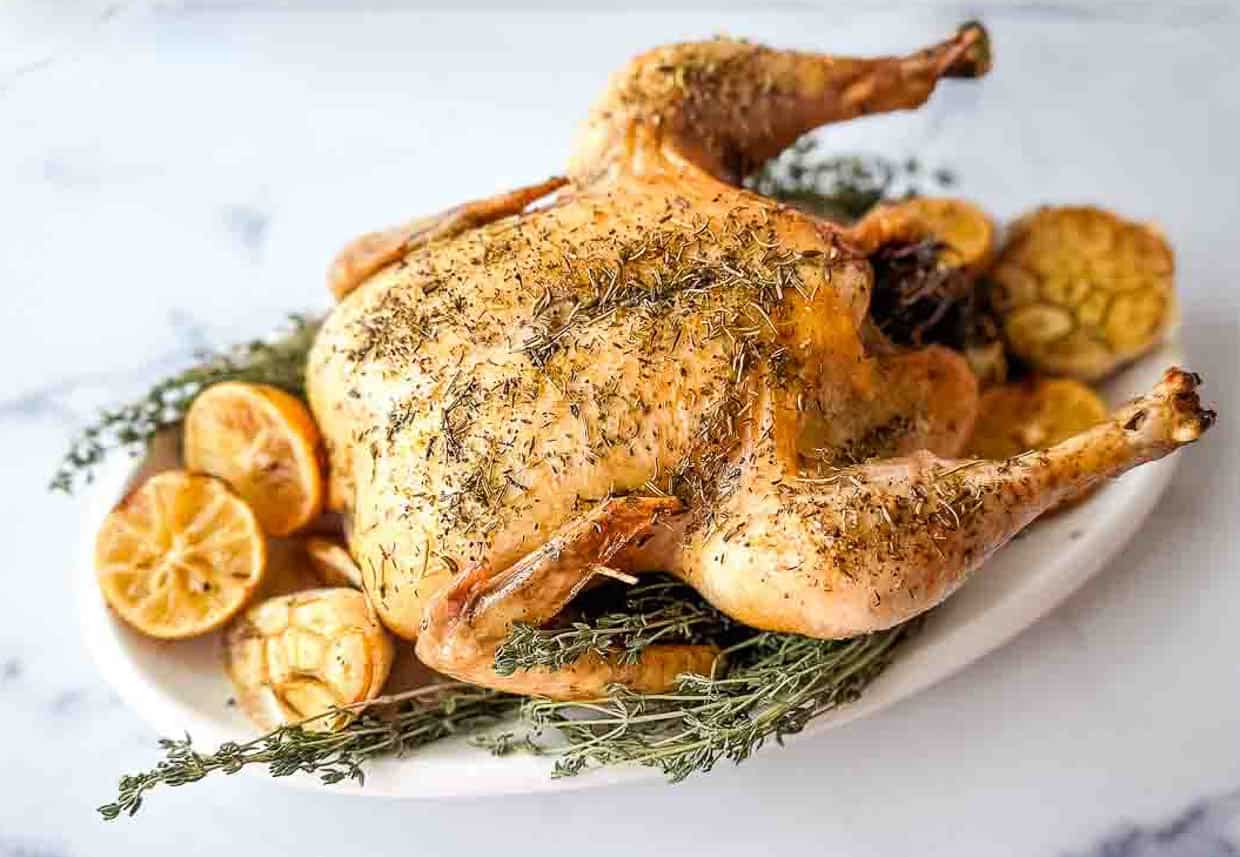
Fresh thyme is a delicious addition to soups, roasted vegetables and meats, like roast chicken and lamb, pasta, sauces, sheet pan dinners and
Thyme is popular in a variety of cultures, including Mediterranean cuisines, North and West African and Middle Eastern cuisines.
“The aroma of fresh thyme takes me back to my roots every time I prepare jollof rice. It’s more than just a herb; it’s a connection to my culture, a sprinkle of home infused into every flavorful bite of jollof rice.”
— Louisa Moje, Food Plus Words
To add thyme to your dish, you can add the entire stem with the leaves attached and remove the stem prior to serving. You can also remove the leaves from the stem and add them that way.
Thyme can also be used to flavor beverages, such as infused waters and teas.
“Whether I’m sipping lemon-infused water or peach tea, I love adding a sprig or two of fresh thyme. Its slightly minty, slightly lemony flavor goes a long way in bringing out the natural flavors of those drinks.”
— Sage Scott, Sage Alpha Gal
Final thoughts
Thyme is a fragrant, flavorful, hardy herb prized by many cultures for its earthy, lemony flavor and versatility. It is a perennial herb but freshest in late spring and summer.
To choose the freshest thyme, select bunches with healthy, vibrant green leaves, no dark or yellow spots and no wilting. Ensure the stem is not dry and brittle and that the container does not contain a lot of excess moisture.
You can store thyme in a variety of ways. The most common storage method is to wrap the thyme in a damp paper towel and store it in a plastic bag in the refrigerator. You can also store it in water, dry it or freeze it.
As thyme is not a delicate herb, it can be added at the beginning of your cooking process to impart its flavor to the dish.
Try fresh thyme in an array of delicious recipes, from soups to roast meats to rice dishes and discover the deep, versatile flavor this herb can bring to your culinary creations.
Gen is a professional chef, writer and editor living in Southern California. She is the owner and recipe creator behind Two Cloves Kitchen, a food site featuring contemporary, California-inspired recipes. She has edited over 20 novels, short stories and essays for publication.